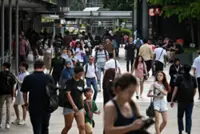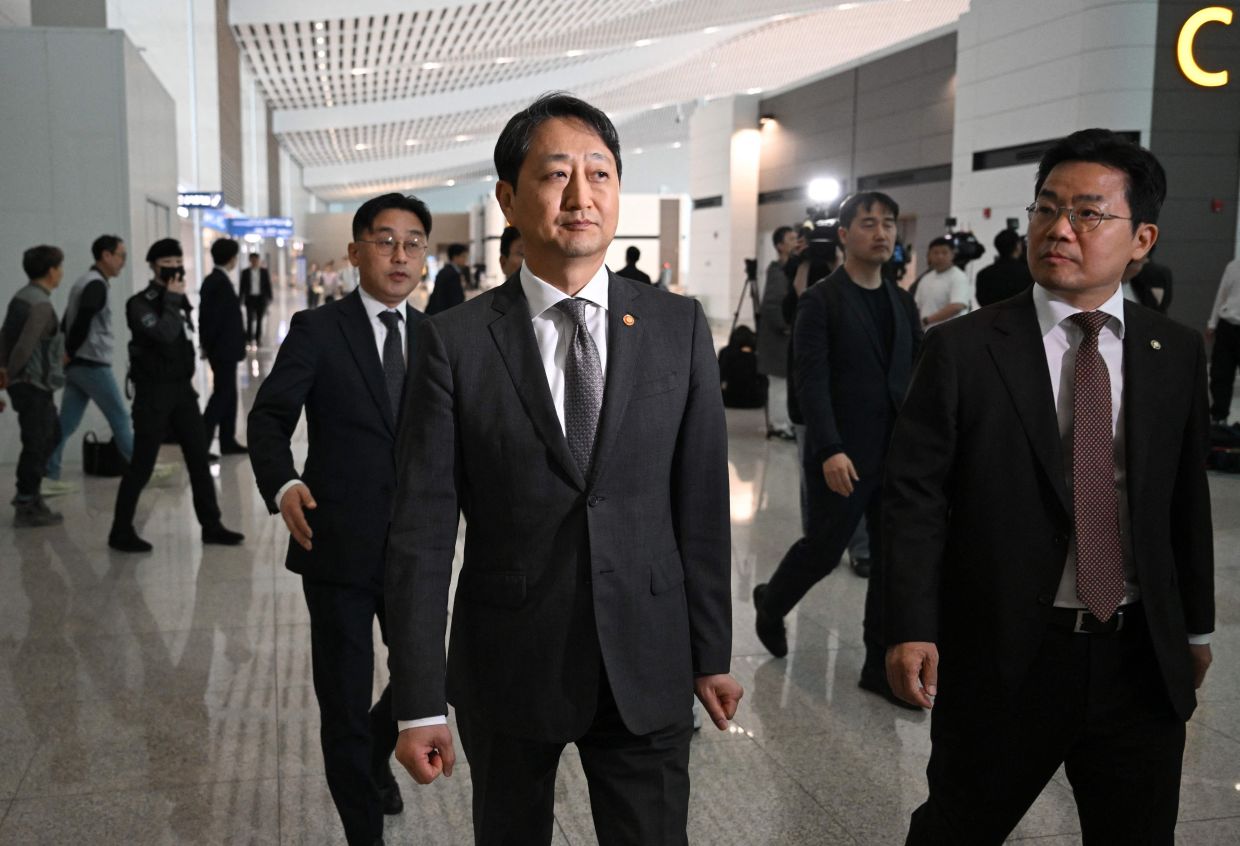
Rescue workers at the site of a collapsed building in Bangkok on April 1, following a strong earthquake in Myanmar on March 28. - Reuters
SINGAPORE: On March 28, Myanmar was hit by one of its worst earthquakes in a century, with more than 3,000 left dead after a 7.7-magnitude earthquake hit the Sagaing region of the South-East Asian nation.
Tremors were felt as far as Hanoi in Vietnam, more than 2,000km away. Tremors were also felt in Bangkok – more than 1,000km from the epicentre – where a skyscraper that was under construction collapsed as a result.
Simply Science, a series by the Straits Times, looks at what caused the earthquake, and just how safe Singapore is from the impact of such natural disasters.
Earthquakes typically occur in fault zones, where tectonic plates – large sections of rock making the earth’s crust and upper mantle – collide or slide against one another.
Myanmar lies at the convergence of four tectonic plates – the Eurasian plate, the Indian plate, the Sunda plate and the Burma microplate.
Experts have attributed the earthquake to a strike-slip of the Sagaing fault, where the Indian and Sunda plates moved horizontally along each other.
The Sagaing fault is a major fault, or crack in the rock, running about 1,400km from Myanmar’s north to its south.
Get key highlights in the lead-up to Polling Day. You will also receive the ST Morning Briefing.
As to why the tremors were felt in Bangkok, Associate Professor Wei Shengji from the Asian School of the Environment at NTU, said the size of the event resulted in the generation of strong seismic waves that could travel long distances.
This was amplified by the Bangkok basin, otherwise known as the Chao Phraya delta, whose soft soils resulted in the earthquake being more dangerous.
Buildings have a natural frequency of vibration, determined by factors such as height, materials and construction.
Should the frequency of the tremors be consistent with the building’s resonance frequency, the shaking would be even further amplified within the building, said Prof Wei, who is also principal investigator at the Earth Observatory of Singapore.
A number of viral videos of the March 28 earthquake show water from rooftop pools in Bangkok splashing down the sides of buildings amid the tremors.
Professor Ivan Au from NTU’s School of Civil and Environmental Engineering said: “As far as structural safety of the building is concerned, water sloshing can increase the vibration and forces in the building during the earthquake.
“If such vibration or force is not accounted for in the design or construction, it may induce additional damage to the building.”
Though comments left on such videos have suggested these pools can act as a damping system – absorbing the shaking motion of the building during an earthquake – any reduction effect may be limited unless the pool is specially designed to act as such, said Prof Au, noting that such use is uncommon.
Specially designed sloshing devices, known as sloshing dampers or tuned liquid dampers, work by transferring vibration energy out from the building and dissipating it, he said.
Such devices are often designed to have a resonance frequency that roughly matches that of the structure, with a damping mechanism, such as a viscous fluid, that facilitates effective energy dissipation, he added.
To protect buildings against earthquakes, their structures need to be designed for forces induced by horizontal vibrations during such earthquakes, in additional to vertical gravity loads, said Prof Au.
This requires, for instance, that columns, beams and joints have a higher load-carrying capacity, while structural members and joints need to be designed with good ductility, allowing them to remain intact, even after excessive deformation.
“The need to provide higher horizontal resistance or reduction in vibration may also require a change in the structural form, that is, the mechanism by which internal forces are transferred and deformation is resisted,” said Prof Au.
This includes diagonal braces or other additional damping devices, he added.
Prof Au cited the example of the 101-storey Taipei 101 skyscraper in Taiwan, which employs a 660-tonne steel pendulum as a damper, counteracting the building’s sway during earthquakes and strong winds.
The soil on which the building is situated is also important, he said.
“The soil acts as a medium that can amplify the shaking at the bedrock, where seismic waves first arrive, as the wave propagates to the foundation and then the building,” he added.
Prof Au noted that in some cases, violent shaking could lead to the soil losing its strength temporarily – a phenomenon known as soil liquefaction – leading to catastrophic ground failure as well as severe damage to buildings.
Prof Wei said that while Singapore and its surrounding areas are relatively free of seismic activity, there is still not enough data – such as from seismic and geologic datasets – to sufficiently evaluate the local seismic risk.
“This is because big earthquakes in low-activity regions take a much longer time to reoccur – it could be thousands or tens of thousands of years – and there are insufficient research investigations,” he added.
Given what happened in Bangkok, Prof Wei stressed that Singapore’s risk assessment area should be widened, noting that the Sumatran fault – a 1,900km-long strike-slip fault, similar to the Sagaing fault that caused the Myanmar earthquake, running the entire length of the island of Sumatra – is only about 400km away from the Republic.
Prof Au said buildings here have some protection against such eventualities.
“Although Singapore is generally not considered as earthquake-prone, the effect has been considered,” he added.
He noted that Singapore has its own National Annex – paralleling the European design code, or Eurocode, which lays out standards for the structural design of buildings and civil engineering structures – that spells out specifics suitable for local considerations, including earthquake resistance. - The Straits Times/ANN









































